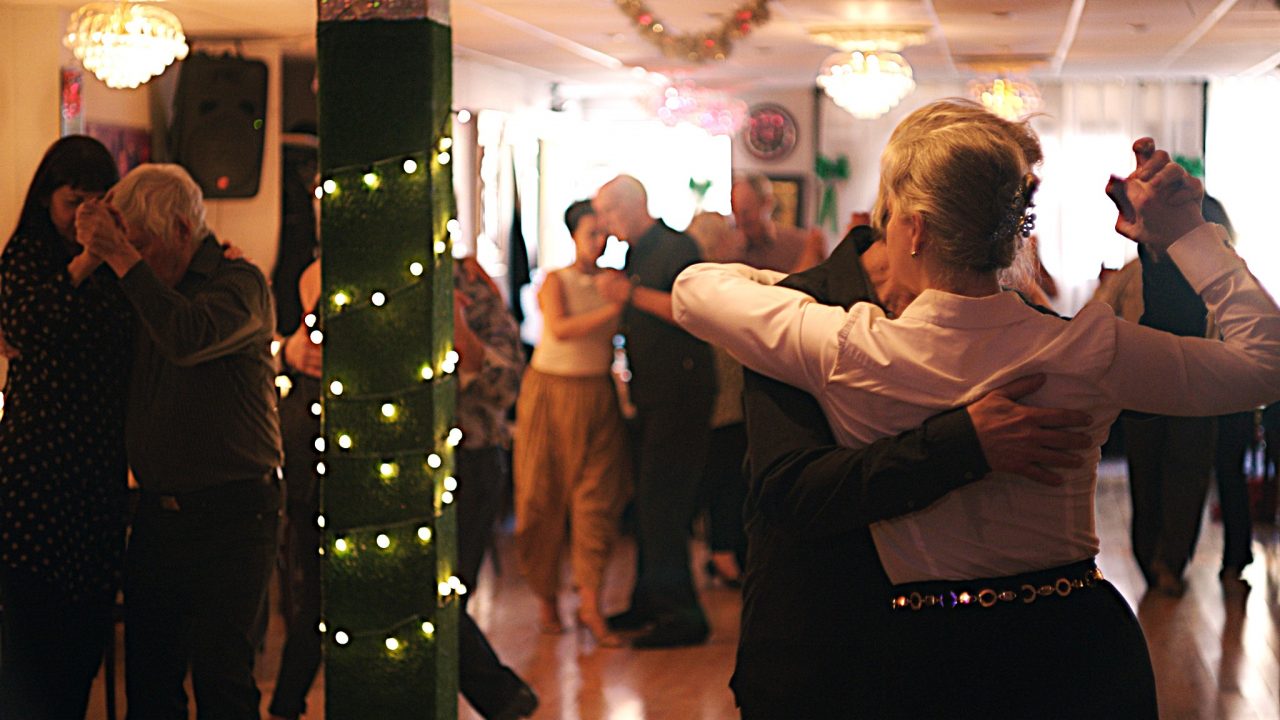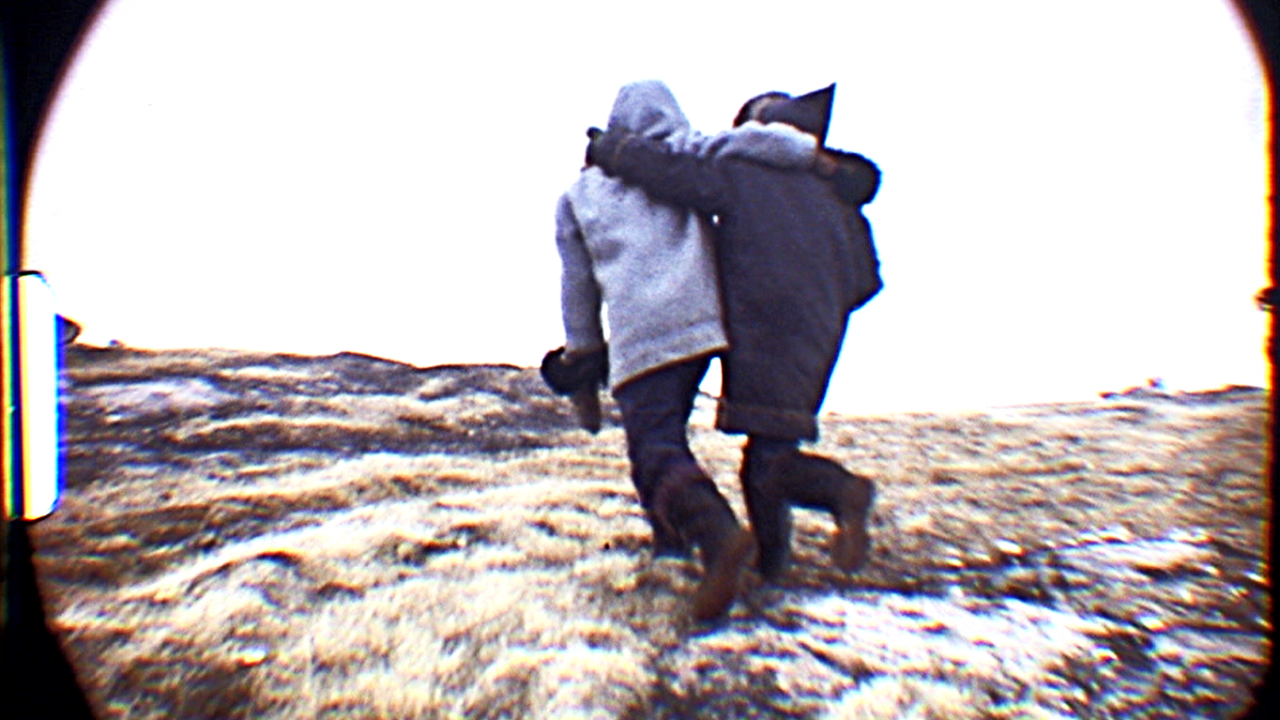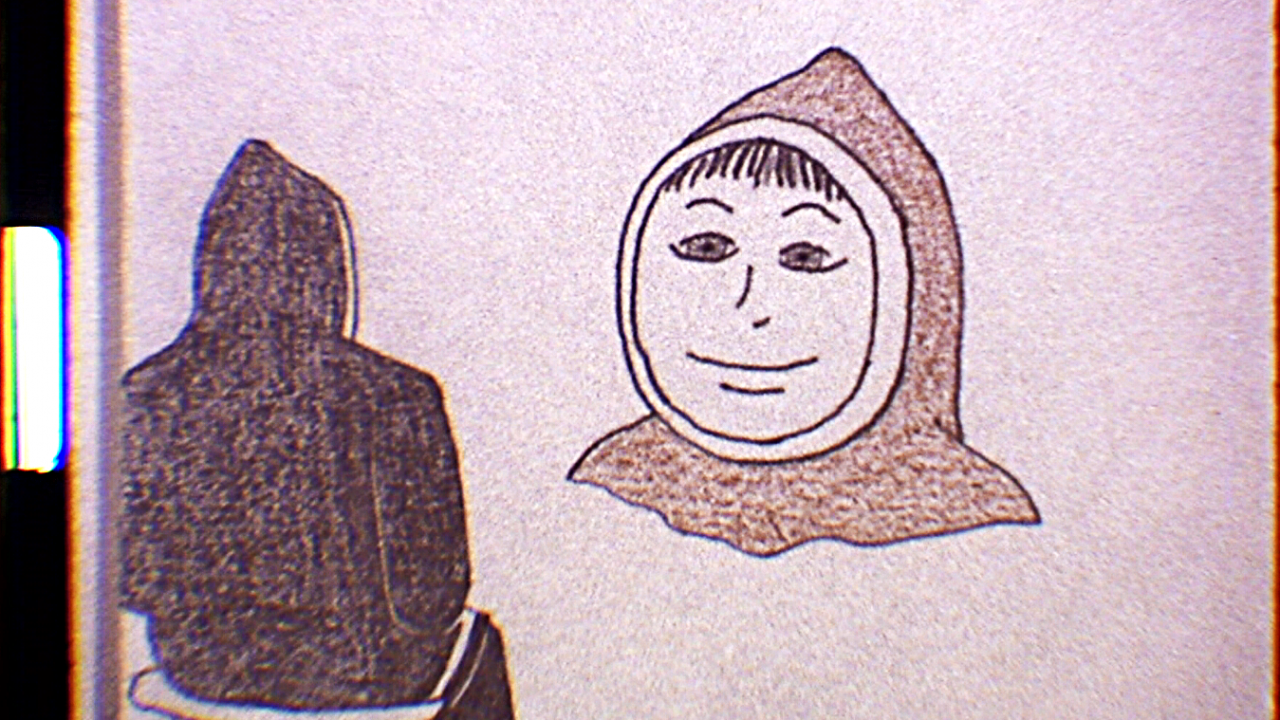
50 Years of Latinx-Canadian Cinema: From the Margins to the Mainstream
50 Years of Latinx-Canadian Cinema: From the Margins to the Mainstream
Let’s dive into the untold history of Latinx-Canadian cinema and explore how today’s Latinx filmmakers are finally thriving in an environment that offers rich opportunities to show their work.
Before reading any further, take a moment to watch the three-part Il n’y a pas d’oubli (1975), which won awards at both the Locarno International Film Festival and the Strasbourg International Film Festival on Human Rights, and introduced a radical concept to the NFB 50 years ago: Latinx-Canadian cinema!
Il n’y a pas d’oubli, Rodrigo Gonzalez, Jorge Fajardo et Marilú Mallet, offert par l’ Office national du film du Canada
2025 marks the 50th anniversary of the first NFB film by directors from Latin America living in Canada who consciously explored their hybrid identities and political realities as newcomers to the country. Although Latin American immigrants might have made films in Canada prior to this, Il n’y a pas d’oubli heralded the birth of a collective, self-aware cinematic movement. The film represents a shift from the perspectives of individual artists to a focus on being part of a community with a shared voice; it addresses themes of diaspora and identity, political exile (most of these immigrants were fleeing military dictatorships that swept across Latin America in the 1960s and 1970s), and memory and belonging. Most early Latinx-Canadian filmmakers were heavily influenced by, or were part of, the Third Cinema movement (born in Argentina in 1968, thanks to Octavio Getino and Fernando Solanás[i]) and, therefore, it could certainly be argued that early NFB Latinx-Canadian cinema was by default political, non-conformist, non-propagandistic and non-commercial… just as the manifestos of Third Cinema dictated!
An Overlooked Masterpiece: Il n’y a pas d’oubli
Marilú Mallet, Jorge Fajardo and Rodrigo González-Rojas each direct a segment of this groundbreaking fiction triptych. González-Rojas’s J’explique certaines choses[ii] (shot entirely in Spanish) captures an authentic gathering of Chilean exiles, complete with wine-fueled debates and explosive guitar music. Mallet’s Lentement (not available in English for the moment) is the most cinematically sophisticated chapter, using innovative narrative techniques to capture a Chilean woman’s first disorienting days in exile. And Fajardo’s Steel Blues (embeded below) documents the tragic reality of displaced intellectuals—not just Chileans, but Latin America’s entire educated class—reduced to manual labour that eroded both their identities and futures. Each of these segments is a must-watch Latinx-Canadian classic!
Steel Blues, Jorge Fajardo, provided by the National Film Board of Canada
Il n’y a pas d’oubli is an overlooked masterpiece (an honorable Third Cinema heir), and it’s worth getting to know a little about its Chilean-Canadian directors, who had backgrounds in theatre and literature as well as cinema. González-Rojas was a multidisciplinary artist and prolific playwright and novelist who energized Montreal’s Latino/Québécois theatre scene. Multi-award-winning Mallet has pioneered diaspora storytelling, making dozens of films over 50 years. And civil engineer-turned-iconoclastic filmmaker Fajardo has made 15 films (1975–2002) that remain underappreciated, despite their radical narratives and experimentation with form.
Who Got Seen in the ’70s and ’80s? La Familia Latina (1986)
Apart from the Chilean pioneers mentioned above, the only other Latinx-Canadian director making films for the NFB in the 1980s was Colombian-born Germán Gutiérrez. The NFB’s most prolific Latino-Canadian filmmaker, he directed 18 films and shot 20 others, including seminal works like La Familia Latina, a vital early chronicle of the Latin diaspora and its dissidents.
La Familia Latina is another overlooked masterpiece; it’s the first NFB film (and I would venture to say the first in Canada) that understood and explored the Latinx-Canadian community within the mosaic of the country. In the 1970s and 1980s, the very concept of “Latin Canadian” was still fairly new, and films made by Latinx-Canadians were quite rare, so the films that existed were not widely seen. Gutiérrez’s La Familia Latina, a milestone in Latinx-Canadian cinema, screened at six festivals in North America, Africa and Europe, and won the Golden Sheaf Award at the Yorkton Film Festival in Saskatchewan. But no Latinx film festivals existed at the time to celebrate this groundbreaking work (a version with English subtitles is premiering on nfb.ca this October to commemorate Latin American Heritage Month).
The Latin American Family, Germán Gutiérrez, provided by the National Film Board of Canada
The Breakthrough: Crossing Borders in the ’90s
In November 1993, a group of Latinx filmmakers organized Toronto’s first Cruzando Fronteras (“Crossing Borders,” led by Jorge Lozano) conference, uniting 39 artists and showcasing over 30 independent films and videos; this landmark event finally highlighted the talent of Latin American creators for audiences in Canada. [iii] Meanwhile, seminal films like Chile, Obstinate Memory (1997) by visionary director Patricio Guzmán underscored the urgent need for festivals dedicated to Latinx filmmakers, experiences and perspectives. Despite being selected by 31 festivals, this award-winning film didn’t have a Latinx-Canadian festival platform to amplify its reach within Spanish-speaking communities in Canada.
Chile, Obstinate Memory, Patricio Guzman, provided by the National Film Board of Canada
In November 1995, Toronto collective Cruzando Fronteras created a short film and video festival that also featured discussions and lectures designed to forge connections between participants.[iv] This formed the foundation for the first Latinx-Canadian film festival in Toronto, AluCine Latin Film & Media Arts,[v] which launched in 2000.
Latinx-Canadian Film Sanctuaries: Art and Film Festivals Across Canada
The 2000s were a transformative era for Latinx-Canadian cinema. On the one hand, Latin American-born filmmakers left behind the principles of Third Cinema[vi] and started exploring other cinematic avenues (see, for example, José Torrealba’s Open Secrets [2003] or Kaveh Nabatian’s Taxi Libre [2011]). Also, grassroots festivals and cultural sanctuaries emerged across the country to celebrate our stories. These spaces—like AluCine, VLAFF-Vancouver’s Latin American Film Festival [vii]; and, LatinArte Festival[viii] in Montreal—became vital platforms where misfit filmmakers like me could premiere our work, often to audiences seeing their own experiences reflected on screen for the first time. For many Latinx-Canadians artists, they were venues that validated our voices and connected us to a network of peers who shared the struggle of navigating an industry that rarely centred our narratives.
Sanctuary, Jamie Escallon-Buraglia, provided by the National Film Board of Canada
These festivals immediately started to shape the cultural identity of Spanish-speaking communities across Canada, by curating films that explored themes of migration, hybrid identities and intergenerational trauma—and transforming theatres into sanctuaries where we could reconnect with our roots. The Chilean and Colombian pioneers finally had spaces to show their work, as did new films—like Jamie Escallon-Buraglia’s Sanctuary (2005, embeded above), about an immigrant on the cusp of being deported from Toronto—which could now reach more fellow citizens experiencing the same struggles in the same city!
From the Margins to the Mainstream: The Successful Fight to Bring Latinx-Canadian Cinema to Screens
Today, Latinx filmmakers across the country have diversified their stories, bringing Latinx-Canadian experiences and perspectives to audiences both here and abroad (e.g., the 2022 films Saturday Night, by Rosana Matecki (embedded below), and Modern Alchemy, by Bren López Zepeda). There are now dozens of festivals that showcase Latinx-American culture and Latinx-Canadian creations across Canada (in addition to the above, there’s FCLM,[ix] LATAM,[x] VLACC,[xi] HFF,[xii] LATAM/CLAFF,[xiii] LAFF[xiv]), and the interest in Latinx-Canadian cinema keeps growing.
Saturday Night, Rosana Matecki, provided by the National Film Board of Canada
In October 2022, the NFB curated two channels on Latinx films (that feature dozens of titles) for the first time, Latinx-Canadian Cinema and NFB Abroad: Latin America on Screen, and published the first blog post aimed to introduce readers to the different phases of NFB films made in Latin America or by Latin Americans from 1945 until the present (you can read it here).
The following year, Latinx filmmaker Cecilia Araneda and Latinx film scholar Zaira Zarza organized the second National Gathering of Latin Canadian Filmmakers in Montreal, which “brought together over 40 Latin Canadian filmmakers, programmers, curators and scholars from across the country to get to know each other, to discuss Latin Canadian cinema history and to start the process of defining pathways forward as a community.”[xv] Later on, through the Winnipeg Film Group, organizer Cecilia Araneda edited a National Gathering of Latin Canadian Filmmakers: A Memoir (2024)[xvi]. In fall 2023, Montreal mayor Valerie Plante organized a reception to celebrate the 5th anniversary of Latin American Heritage Month, which included speeches by Ms. Plante and Angela Sierra (Executive Director of LatinArte in Montreal) on the importance of the Latin-American community in Canada and the success of LAHM. And, earlier this month, Zaira Zarza and Claudia Polledri organized a Montreal conference entitled A Diasporic Gaze: Latinx and Latinx-Canadian Imaginaries on Screen,[xvii] which united dozens of scholars, filmmakers and institutions across from Canada, [xviii] that included a short retrospective screening of the work of Marilú Mallet.
Seguridad, Tamara Segura, provided by the National Film Board of Canada
Fifty years ago, Latin American culture was practically unknown in Canada; today, it seems as if every event features films, a piece of music or traditional dish with a Latinx-Canadian flavour. This is the result of the tireless efforts of scholars, artists, curators and others to amplify our perspectives. A child in Vancouver, Winnipeg or Halifax can finally view content that reflects their own experience, their family’s sense of humour, language and day-to-day struggles, on the big screen at an arts or film festival.
This October, we’re celebrating the fact that for over half a century, Latinx filmmakers in Canada have been shaping the NFB into a space that showcases the country’s Latinx-American heritage. I invite you to watch some of the NFB films made by Latinx-born directors, including Tamara Segura’s multi-awarded Seguridad (2024), embedded above. These are important works that helped Latinx communities make the leap from marginalized immigrants to vital contributors to Canada’s richly multiethnic and diverse society. Enjoy!
Header Image: Saturday Night (2022) by Rosana Matecki
[i] https://ufsinfronteradotcom.wordpress.com/wp-content/uploads/2011/05/toward-a-third-cinema-getino-y-solanas-tricontinental-1969.pdf
[ii] Title taken from the eponymous poem by Pablo Neruda, “Explico algunas cosas” (1947), from his book Tercera Residencia. https://www.neruda.uchile.cl/obra/obraresidencia3d.html
[iii] https://www.alucinefestival.com/our-vision
[iv] Crossing Borders/Cruzando Fronteras flyer provided by Sinara Rozo Perdomo, director of Alucine Latin Film & Media Arts Festival
[v] https://www.alucinefestival.com/
[vi] IBIDEM
[vii] (launched in 2003, and which, according to its founder Víctor Martínez Aja, was aimed to showcase Latinx works instead of a film contest) https://vlaff.org/ This year’s edition was programmed by Anne-Mary Mullen, Valentina Acevedo Montilla & Christian Sida Valenzuela
[viii] (its first edition in 2009 included a live meeting with Latinx filmmakers that inspired a Spanish radio show on Latin American Film and Culture, produced by CFMB – AM 1280 https://latinarte.ca/
[iv] https://fclm.ca/ Yuri Berger & Roland Smith
[x] https://www.lataff.ca/
[xi] https://vlacc.ca/ Víctor Martínez Aja & Lili Vieira de Carvalho
[xii] https://www.uvic.ca/humanities/sllc/community-research/hispanic-film-festival/index.php
[xiii] https://latam.ca/latino-film-festival-saskatoon-y-edmonton/
[xiv] https://www.ottawafestivals.ca/post/28th-edition-of-latin-american-film-festival-laff-announced-for-april
[xv] https://www.ceciliaaraneda.ca/montreal-gathering-memoir/
[xvi] featuring essays by Cecilia Araneda, soJin Chun, felippe, Darien S. Nicolás, Milena Salazar and Zaira Zarza
[xvii] Colloque international « Un regard diasporique » – Laboratoire CinéMédias
[xviii] Marilú Mallet, Arlène Dávila, Mélanie Ramirez, Emmanuelle Lafrance, Susan Lord, Gabriela Aceves Sepúlveda, Lina Rodríguez, Amalia Córdova, Diego Briceño, Jean Jean, Daniela Mujica, Analays Álvarez Hernandez, Lois Klassen, Katherine Jerkovic



